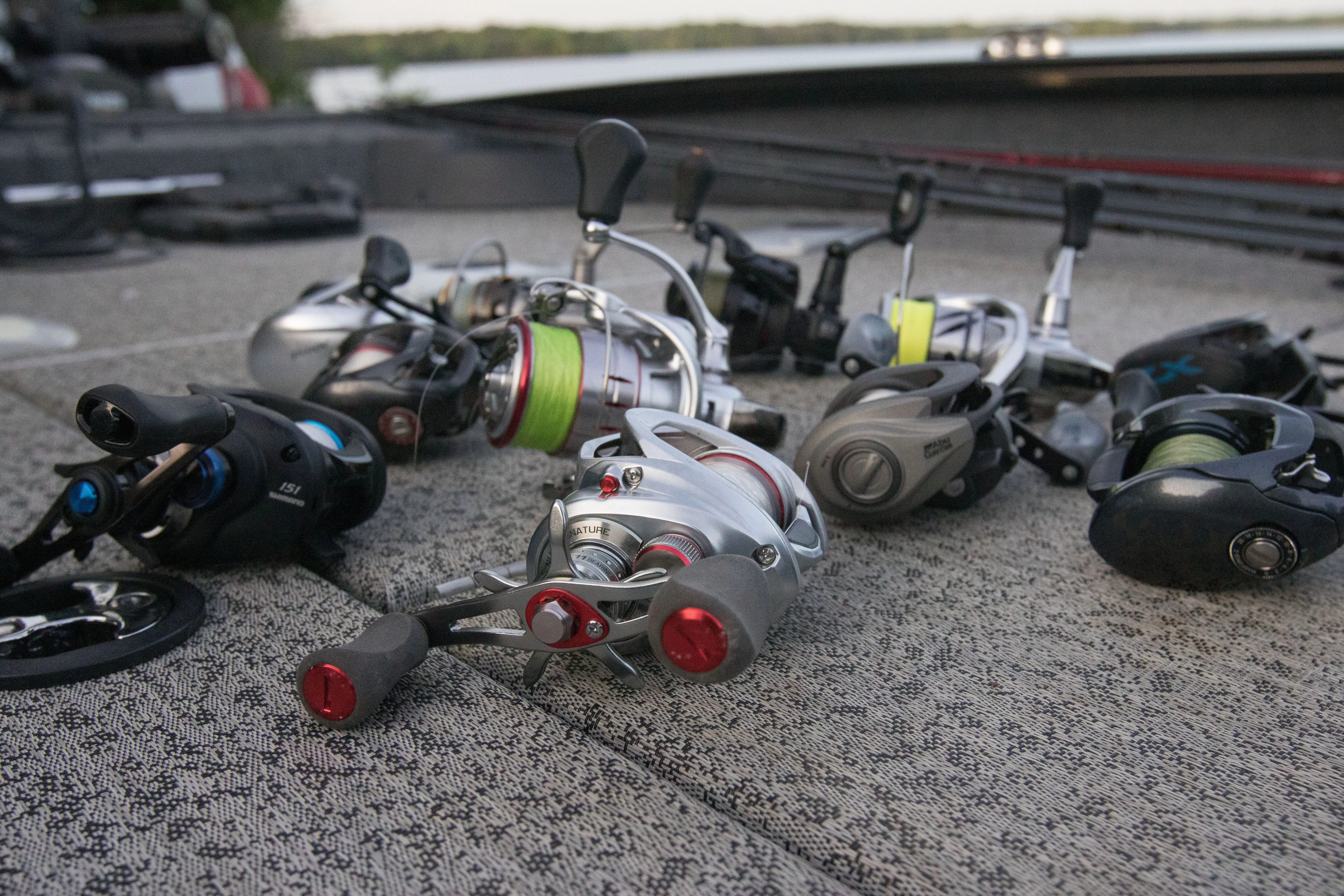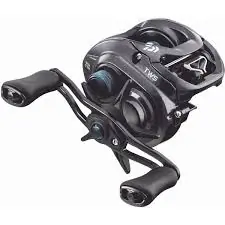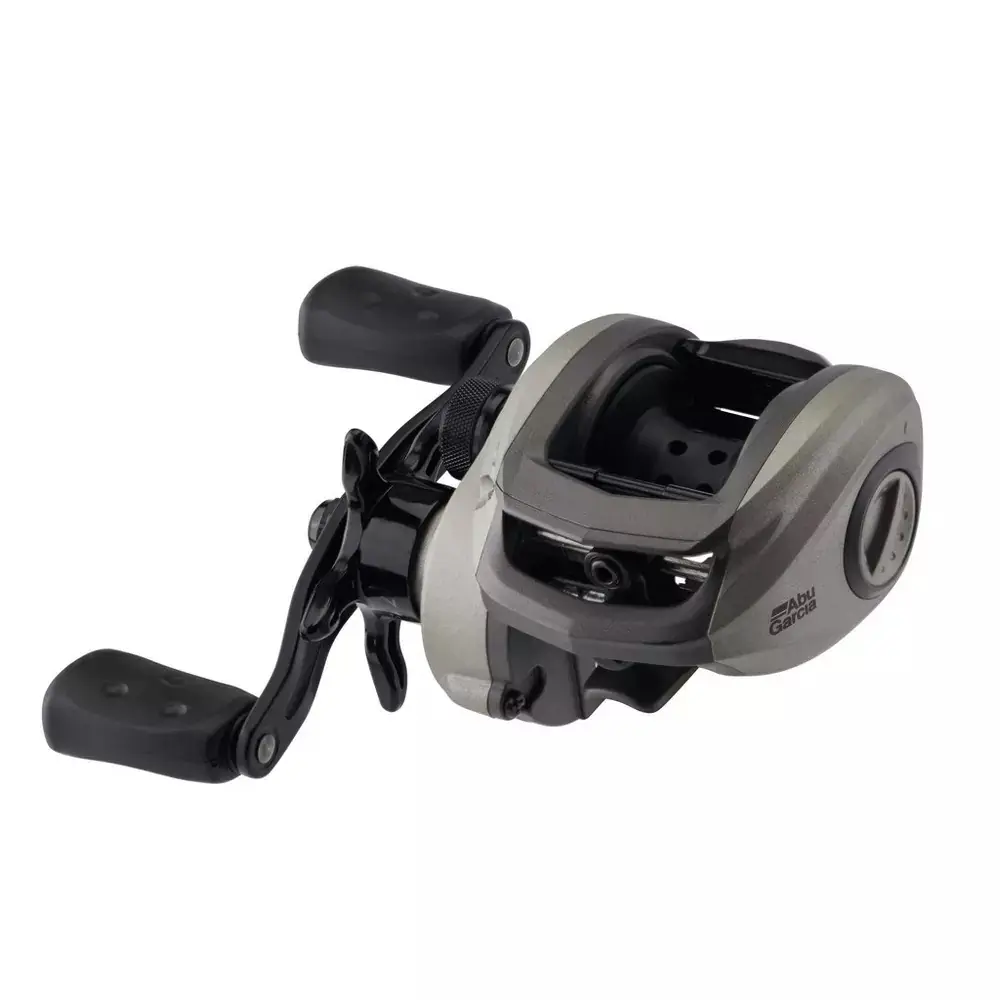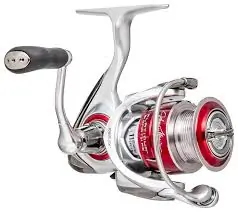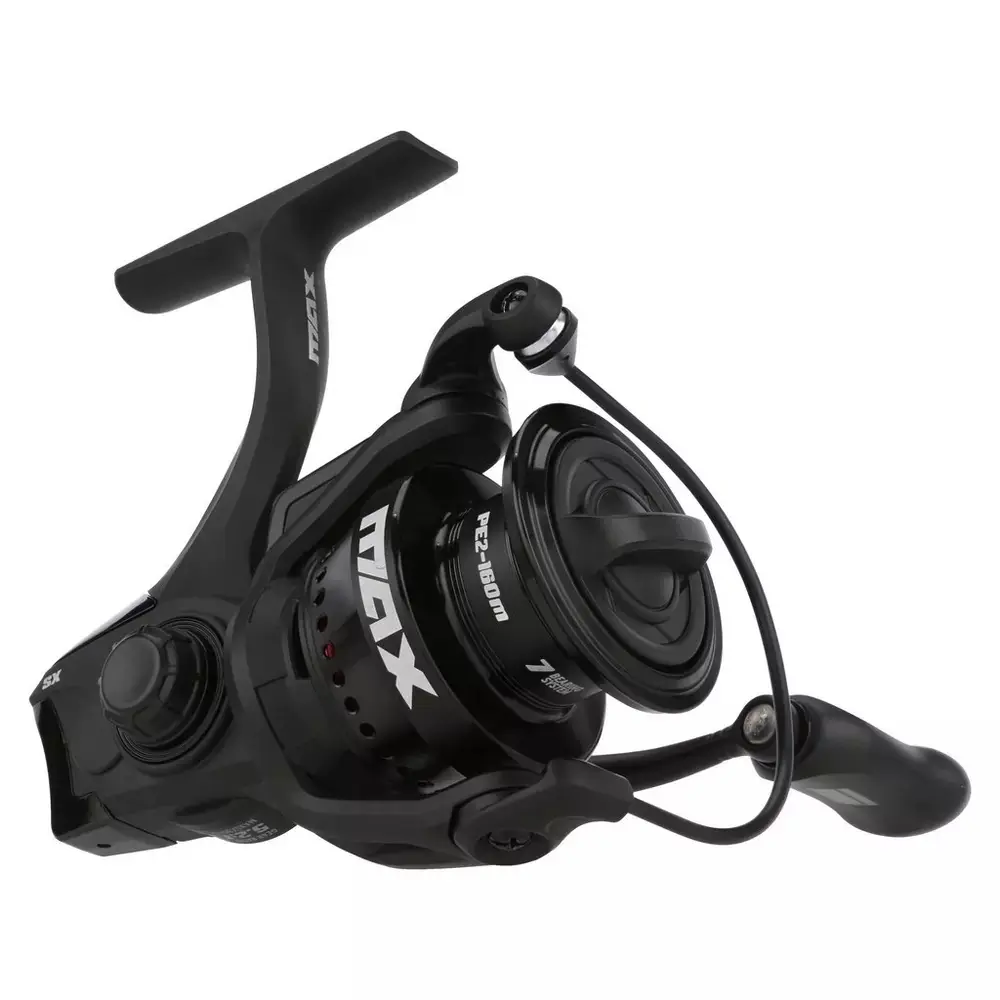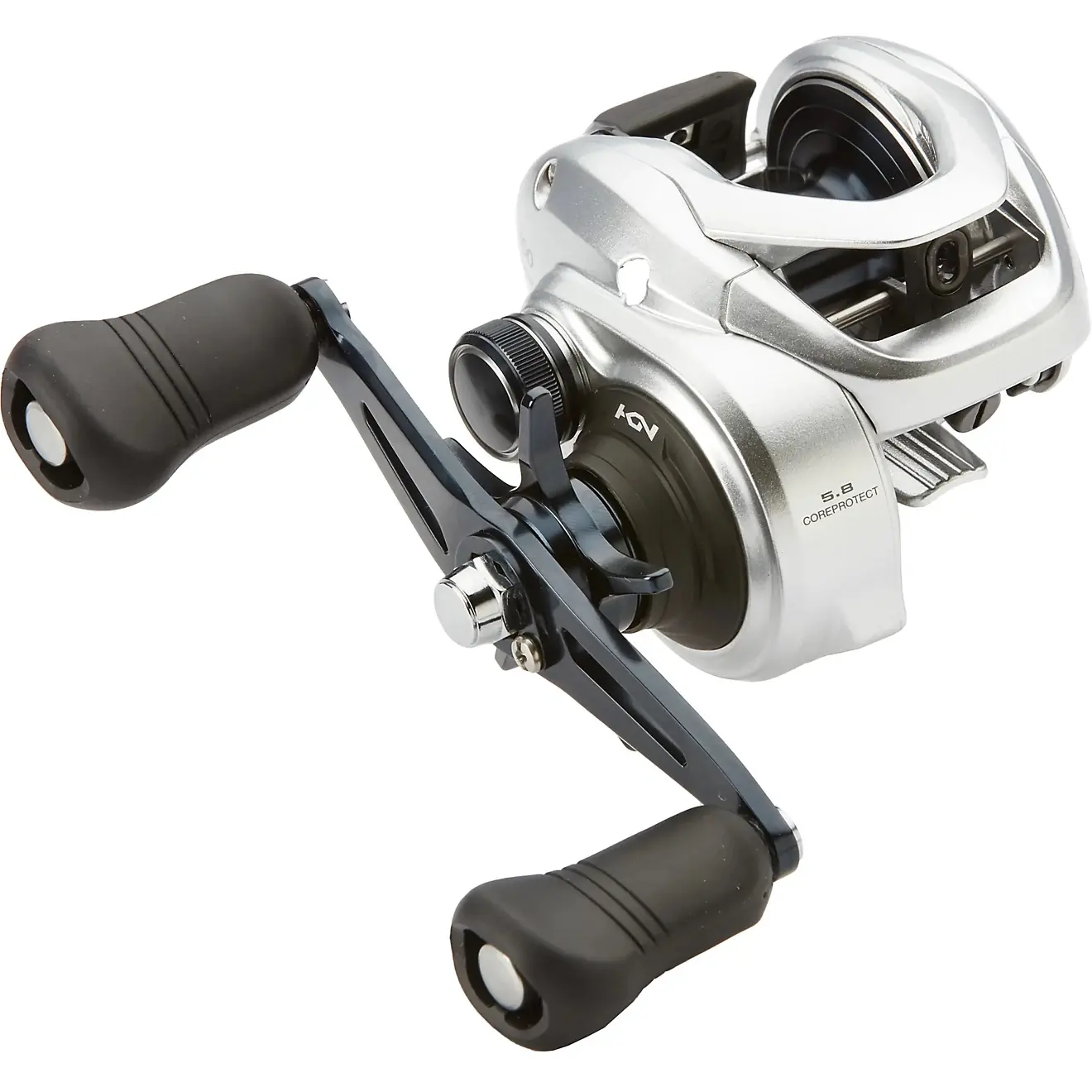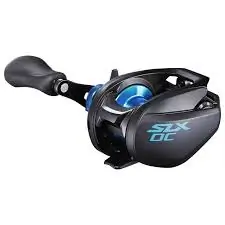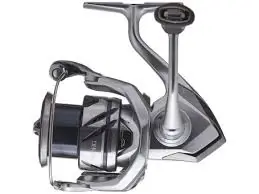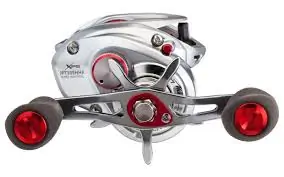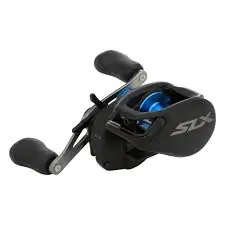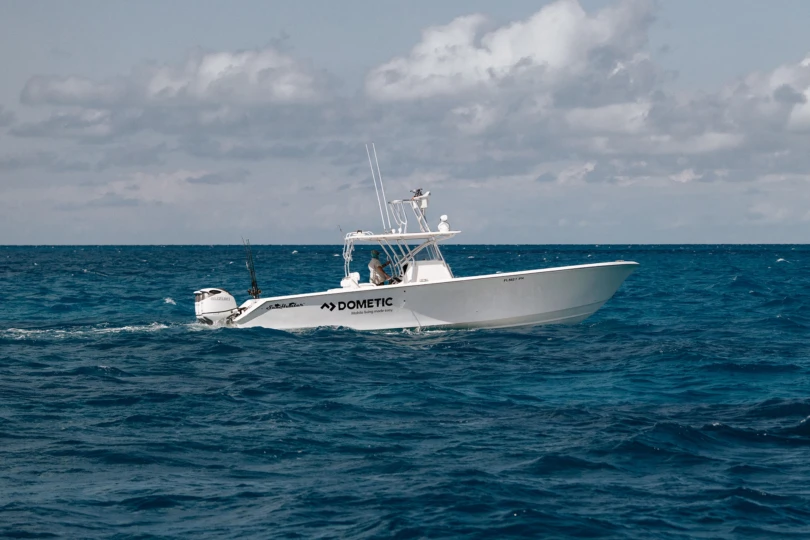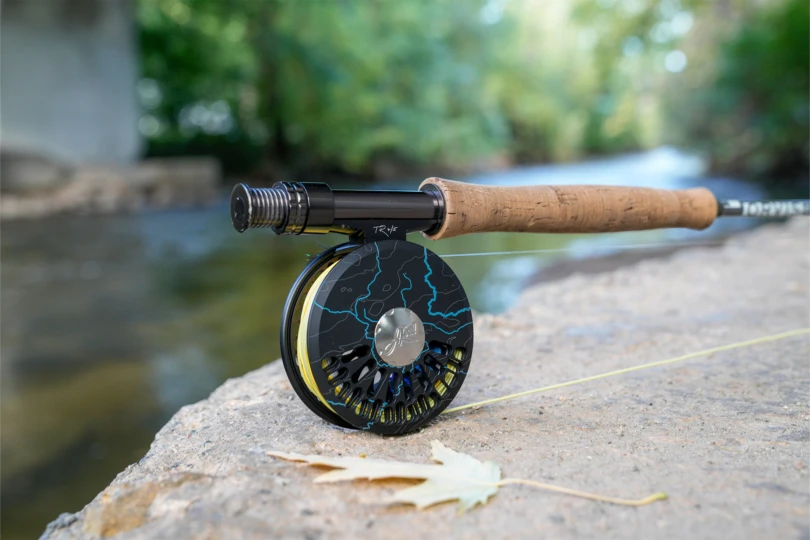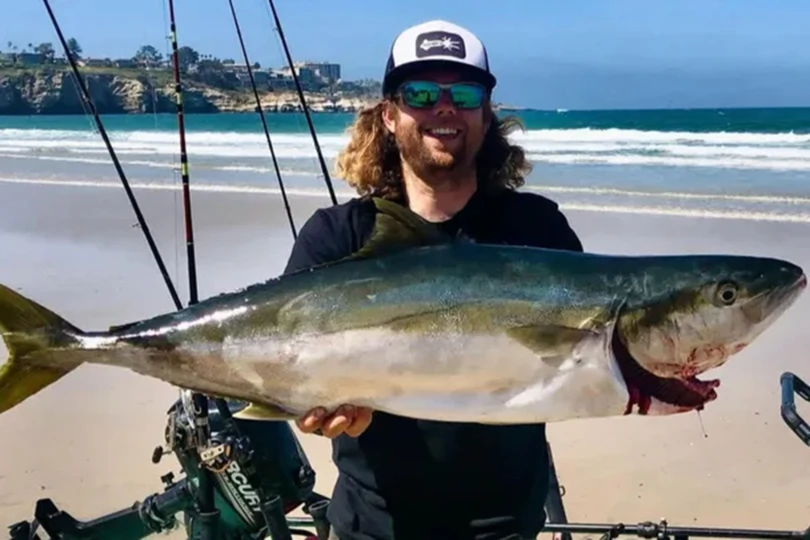For some anglers, a bass fishing reel is a basic piece of equipment. Others treat them like high-end men’s jewelry. Some claim that a $600 spinning reel is worth every penny. But is that really necessary?
Bass aren’t hard-charging saltwater fish that can burn up a drag. But startup inertia, smoothness, and ease of adjustability do differentiate one bass reel from another.
I took to the water this spring armed with reels from multiple manufacturers. I shelved worrying about the names and technologies and tested real-world performance. Fishing different reels side by side allowed me to feel the minute differences that make one reel just a touch better than the other. Obviously, I couldn’t test everything out there, and if you think there’s an exceptional product I missed, let me know!
Cutting to the point, my favorite two reels are the Daiwa Tatula CT baitcaster, which provided solid performance day in and day out. For finesse fishing, the Bass Pro Johnny Morris Platinum Signature Spinning Reel is just as smooth as more expensive reels at a fantastic price.
Top Picks
Best Overall Bass Fishing Spinning Reel
Bass Pro Johnny Morris Platinum Signature Spinning Reel
9.5/10 RatingDaiwa Tatula CT
- Size Tested: 100
- Weight: 7.2 oz
- Bearings: 7+1
- Material: Aluminum
- Gear Ratio: 6.3:1, 7.3:1, 8.1:1
- Max Drag: 13.2
- Line Capacity: 14/120, 16/100
- Inches Per Turn: 30.5
Pros
- Ultra Durable Aluminum Design
- Price
- Numerous gear ratios available
- T-Wing system casts further and reduces backlashes
- Great size for palming
Cons
- Slight vibration on retrieve
Abu Garcia Max Z Low Profile Baitcast Reel
- Size tested: 100
- Weight: Not listed
- Bearings: 5+1
- Material: Carbon
- Gear Ratio: 7.1:1
- Max Drag: 18lb
- Line Capacity: 10/150, 12/120, 17/85
- Inches Per Turn: Not Listed
Pros
- Price
- Smooth drag from Power Disk drag system
- Brass gear ensures long life
- Extra grippy handle
Cons
- Scratches easily
- No clicker on drag adjustment
Bass Pro Johnny Morris Platinum Signature Spinning Reel
- Size tested: 3000
- Weight: 7.4 oz.
- Bearings: 10 (9+1)
- Material: Aluminum
- Gear ratio: 6.2:1
- Max drag: 22 lbs.
- Line capacity (lbs./yards): 8/120, 10/95, 12/80
- Inches per turn: 36.8
Pros
- Price
- Silky-smooth retrieve results in amazing sensitivity
- Low startup inertia
- Comfortable handle
- High inches per turn
Cons
- Doesn't wind line as evenly as premium reels
Abu Garcia Max SX Spinning Reel
- Size Tested: 3000
- Weight: Not Listed
- Bearings: 6+1
- Material: Graphite frame, aluminum handle and spool
- Gear Ratio: 5.2:1
- Max Drag: 14 lbs
- Line Capacity: 6/225, 8/175, 10/140
- Inches Per Turn: Not Listed
Pros
- Price
- Has same features as high end reels where it matters
- Tiny frame, but maintains large spool
- Aluminum spool
- Spool design prevents line from slipping into gears
Cons
- Lower gear ratio
- Carbon components scuff easily
- Drag can be tough to dial perfectly
Shimano Tranx 300/400
- Size Tested: 300
- Weight: 11.64 oz
- Bearings: 5+1
- Material: HAGANE metal
- Gear Ratio: 5.8:1, 7.6:1
- Max Drag: approx. 17.6 lbs for 7.6:1, approx. 22 lbs for 5.8:1
- Line Capacity: 16/210, 20/160, 25/135
- Inches Per Turn: 39.37
Pros
- Doubles as a saltwater and big game reel
- High line capacity helps when fishing heavier pound test on swimbaits and large lures
- HAGANE metal creates unmatched durability
- External brake adjustment
- Heavy drag
- Smooth retrieve
Cons
- Heavy
- Price
- Brake adjustment is tough to turn
Shimano SLX DC
- Size Tested: 150
- Weight: 7.58 oz.
- Bearings: 4+1
- Material: HAGANE Metal body
- Gear Ratio: 6.3:1, 7.2:1, 8.2:1
- Max Drag: 11.02 lbs
- Line Capacity: 12/130, 14/110,16/100
- Inches Per Turn: 26.4-34.64
Pros
- Digitally controlled spool helps prevent backlash
- Variety of gear ratios for power or speed
- Made of high quality metal
- Excellent casting distance, especially in wind
Cons
- Can be tough to get set correctly for DC function to work properly.
- Multi piece design feels cheap for the price of the reel
Other Great Bass Fishing Reels
- Size Tested: 2500
- Weight: 7.8 oz
- Bearings: 6+1
- Material: HAGANE Metal
- Gear Ratio: 5.8:1, 6.4:1 (3000 size)
- Max Drag: 20 lbs
- Line Capacity: 8/140, 10/120
- Inches Per Turn: 34, 37 (3000 size)
Pros
- Smoothest real we tested
- Long stroke spool lays line evenly on retrieve
- Anti twist fin on bail manages line perfectly
- Bearings have shields around them to keep dirt and grit from affecting performance
Cons
- Price
- Size Tested: 100
- Weight: 6.4 oz.
- Bearings: 10+1
- Material: Aluminum
- Gear Ratio: 6.8:1, 8.3:1
- Max Drag: 14 lbs
- Line Capacity: 10/135,12/120,14/95
- Inches Per Turn: 35
Pros
- One of the smoothest baitcasters in our test
- Very lightweight makes the reel balance well on any rod
- Click on tension adjust knob
- Great Warranty
Cons
- Gear ratio not listed on reel
- Metal scuffed with minor use
- Reel handle set too far off the body for easy one handed use
- Size Tested: 150
- Weight: 6.9 oz
- Bearings: 3+1
- Material: HAGANE Metal
- Gear Ratio: 6.3:1, 7.2:1, 8.2:1
- Max Drag: 12 lbs
- Line Capacity: 10/120, 12/110, 14/90
- Inches Per Turn: 25 (6.3:1 model)
Pros
- Price
- Three different gear ratios available
- Durable
Cons
- Not as smooth as other reels
- Easy to backlash
- No external brake adjustment
Comparison Chart of the Best Bass Fishing Reels
| Bass Fishing Reel | Price | Size Tested | Weight | Bearings | Material | Gear Ratio | Max Drag | Line Capacity | IPT |
|---|---|---|---|---|---|---|---|---|---|
| Daiwa Tatula CT | $149 | 100 | 7.2 oz. | 7+1 | Aluminum | 6.3:1, 7.3:1, 8.1:1 | 13.2 lbs. | 14/120, 16/100 | 30.5 |
| Abu Garcia Max Z | $69 | 100 | Not Listed | 5+1 | Carbon | 7.1:1 | 18 lbs. | 10/150, 12/120, 17/ 85 | Not Listed |
| Johnny Morris Platinum Signature Spinning | $129 | 3000 | 7.4 oz. | 9+1 | Aluminum | 6.2:1 | 22 lbs. | 8/120, 10/95, 12/80 | 36.8 |
| Abu Garcia Max SX Spinning | $69 | 3000 | Not Listed | 6+1 | Aluminum/Carbon hybrid | 5.2:1 | 14 lbs. | 6/225, 8/175, 10/140 | Not Listed |
| Shimano TranX | $299 | 300 | 11.6 oz. | 5+1 | HAGANE metal | 5.8:1, 7.6:1 | 17-22 lbs. | 16/210, 20/160, 25/135 | 39.37 |
| Shimano SLX DC | $199 | 150 | 7.58 oz. | 4+1 | HAGANE metal | 6.3:1, 7.2:1, 8.2:1 | 11 lbs. | 12/130, 14/110,16/100 | 26.4-34.6 |
| Shimano Stradic FM | $219 | 2500 | 7.8 oz. | 6+1 | HAGANE metal | 5.8:1, 6.4:1 | 20 lbs. | 8/140, 10/120 | 34-37 |
| Johnny Morris Platinum Signature Baitcaster | $229 | 100 | 6.4 oz. | 10+1 | Aluminum | 6.8:1, 8.3:1 | 14 lbs. | 10/135, 12/120, 14/95 | 35 |
| Shimano SLX A | $99 | 150 | 6.9 oz. | 3+1 | HAGANE metal | 6.3:1, 7.2:1, 8.2:1 | 12 lbs. | 10/120, 12/110, 14/90 | 25 |
How I Tested the Best Bass Fishing Reels
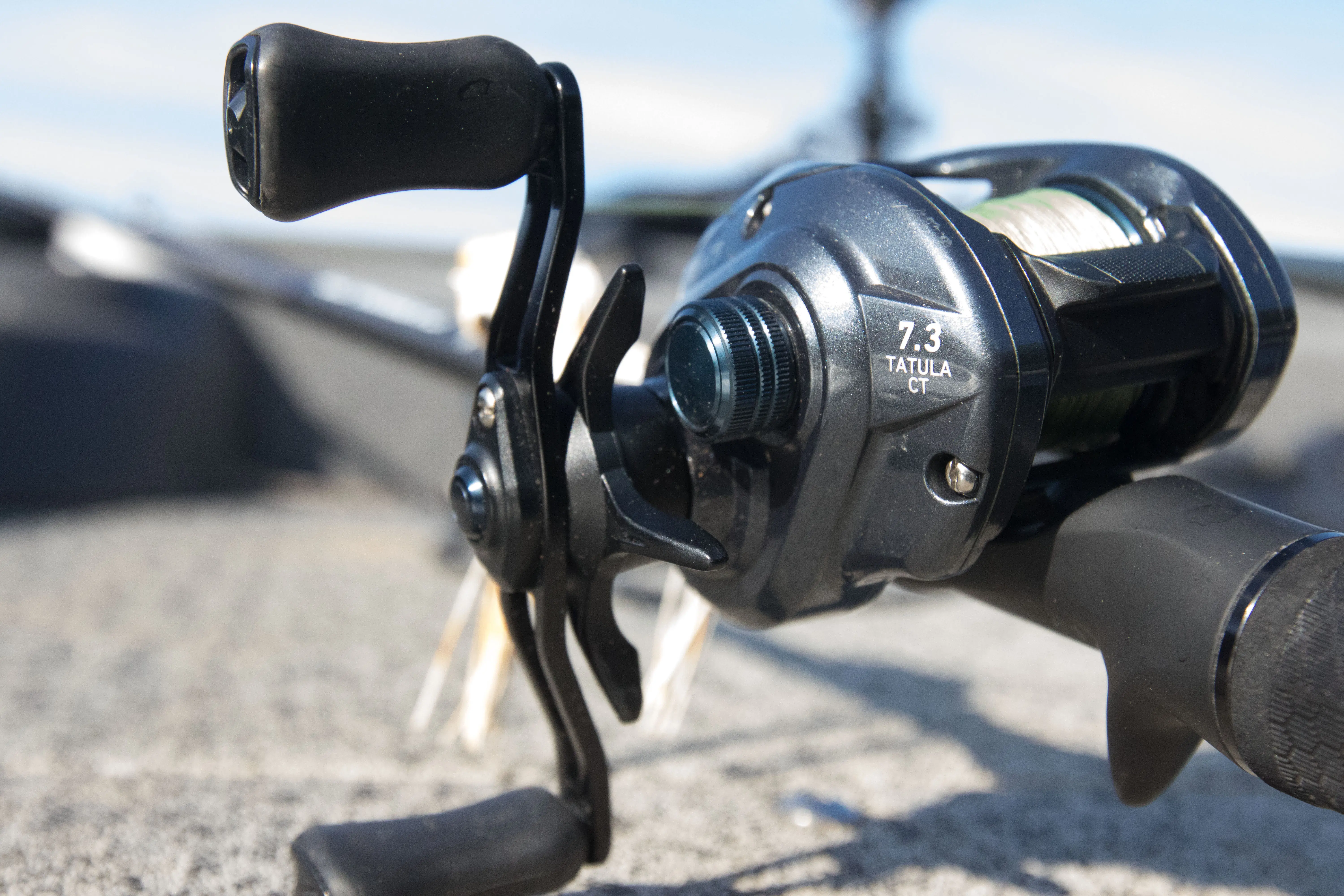
Starting this winter, I conducted extensive research on all the different reels available on the market. It was challenging to narrow it down, but I found some of the best products from Shimano, Daiwa, Lew’s, and other manufacturers. I got my hands on them for on-water testing, which began in the winter and concluded in late spring. While I tested reels, I also tried out the best bass fishing rods and the best fishing sunglasses for those looking for some shades.
Who I Am
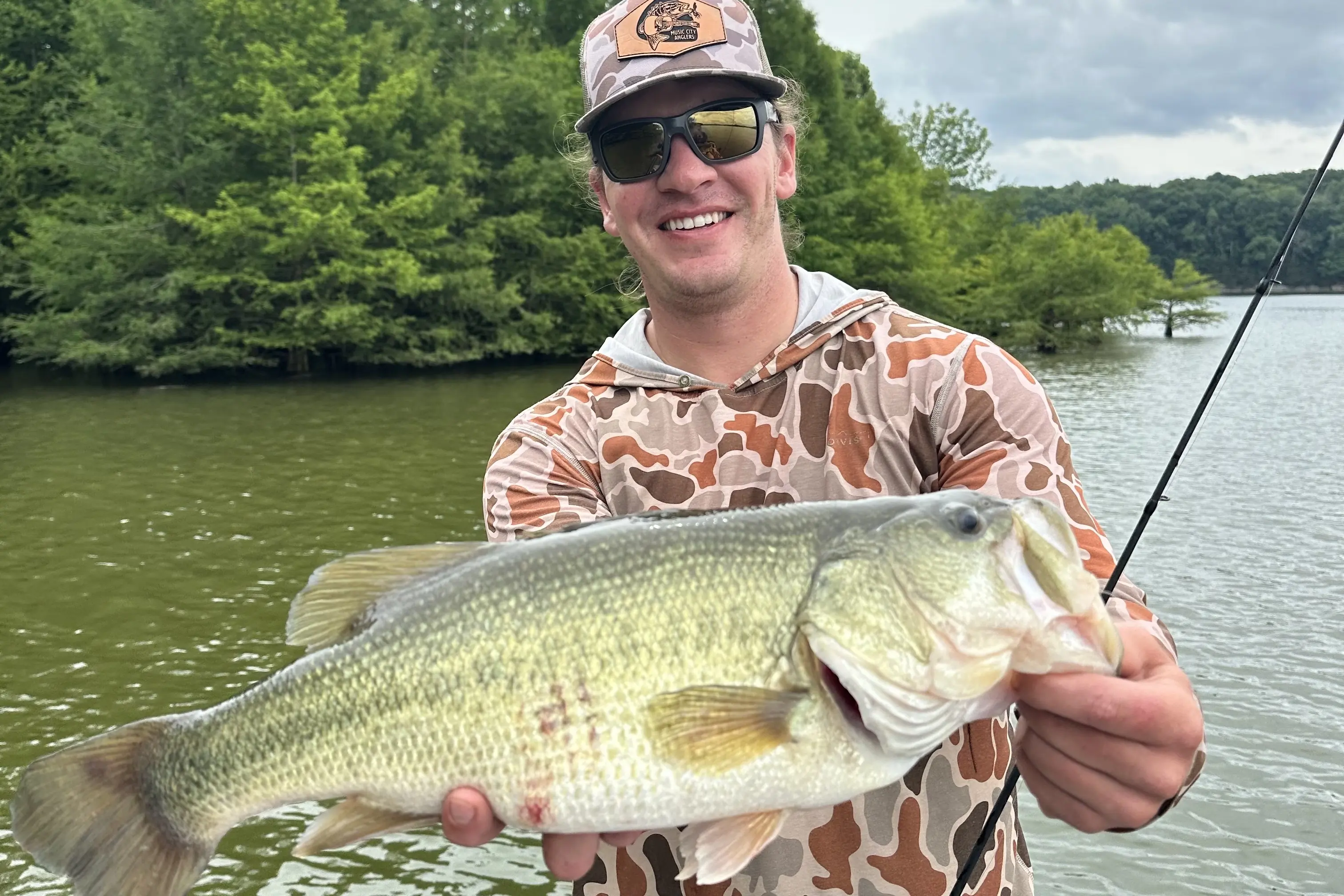



I am bass fishing obsessed, getting on the water numerous times a week and staying up to date with the latest professional tournament trails and industry news.
I’ve been bass fishing since childhood, starting off catching largemouth in lily pads on a lake 15 minutes from my house. As I grew up, I became heavily invested in the fishing industry and have been working full-time in some capacity related to fishing since college. I started writing gear reviews seven years ago and have critically analyzed every piece of gear that crosses my path.
Surrounded by the excellent bass fisheries of Tennessee, I have ample opportunity to fish every bass fishing technique under the sun. I guided full-time for over 10 years and continue to guide on a part-time basis. My typical bass haunts are the large lakes in the Nashville area, as well as the small bass rivers within a 2-hour radius.
My Testing Grounds
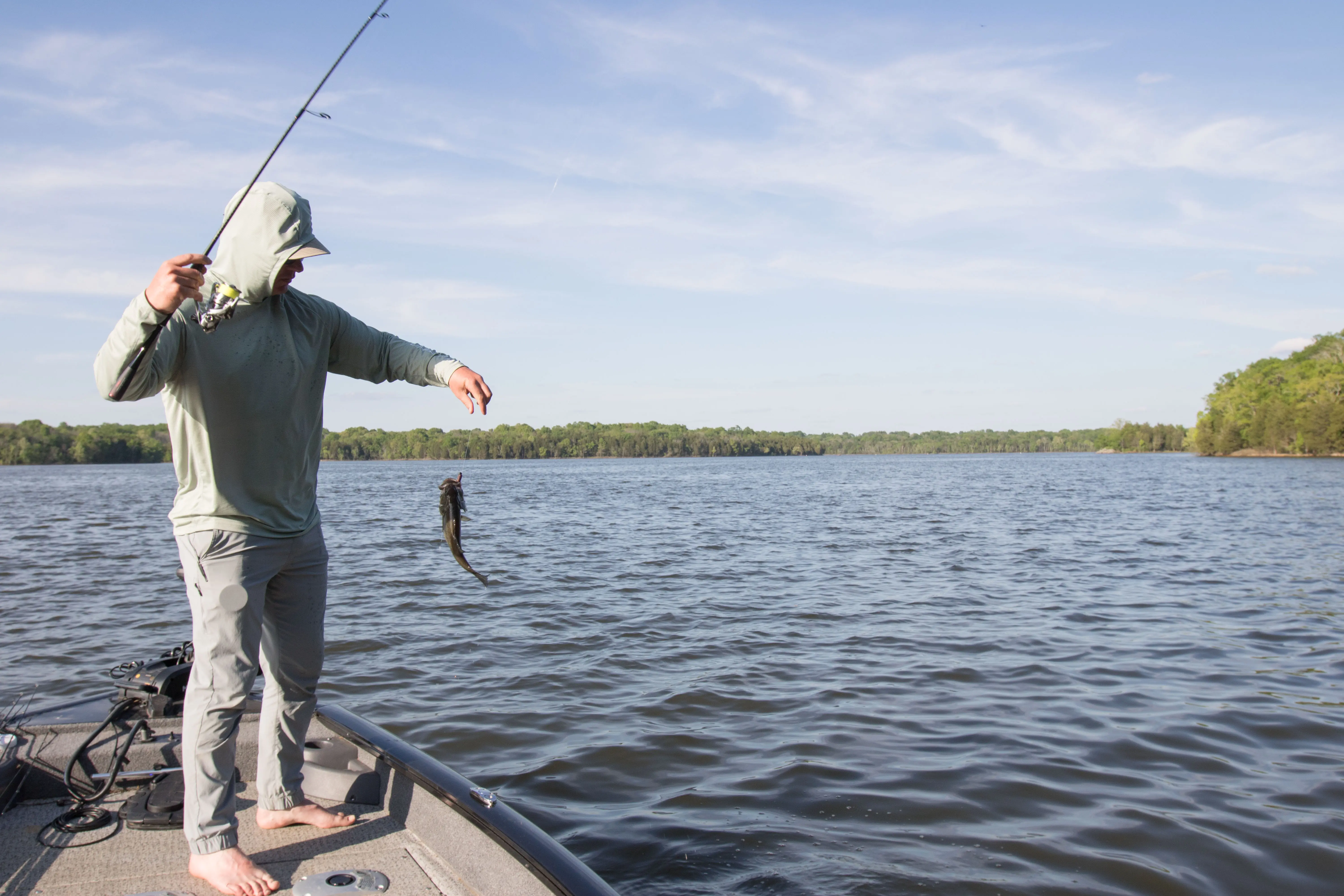



My testing took place on Percy Priest Reservoir and small rivers in the Nashville area. Percy Priest is a typical highland reservoir. The upper end of the reservoir is the best area to target largemouth bass. It is characterized by channel swings, where different rivers converge into the lake. Steep contour lines create shelves where the water depth changes from 20 feet to 2 feet within the space of a few yards.
In the winter, I fished on deep rock and submerged trees. As spring arrived, my clients and I chased the fish to shallow waters, targeting flats and shallow rock banks.
The lower end is smallmouth country. There are high fish numbers in the lower portion of the lake, and I spent a considerable amount of time using spinning reels while employing finesse techniques in this area.
I also spent time doing some classic creeking, fishing in rivers as small as residential streets. These are gorgeous rivers lined with thick forests teeming with life. Baitfish, crawdads, and numerous game fish are in abundance in these rivers. I loaded the reels into my Flycraft for long floats, covering water in pursuit of smallmouth, largemouth, and spotted bass. We may have even thrown at a few Musky.
My Testing Process
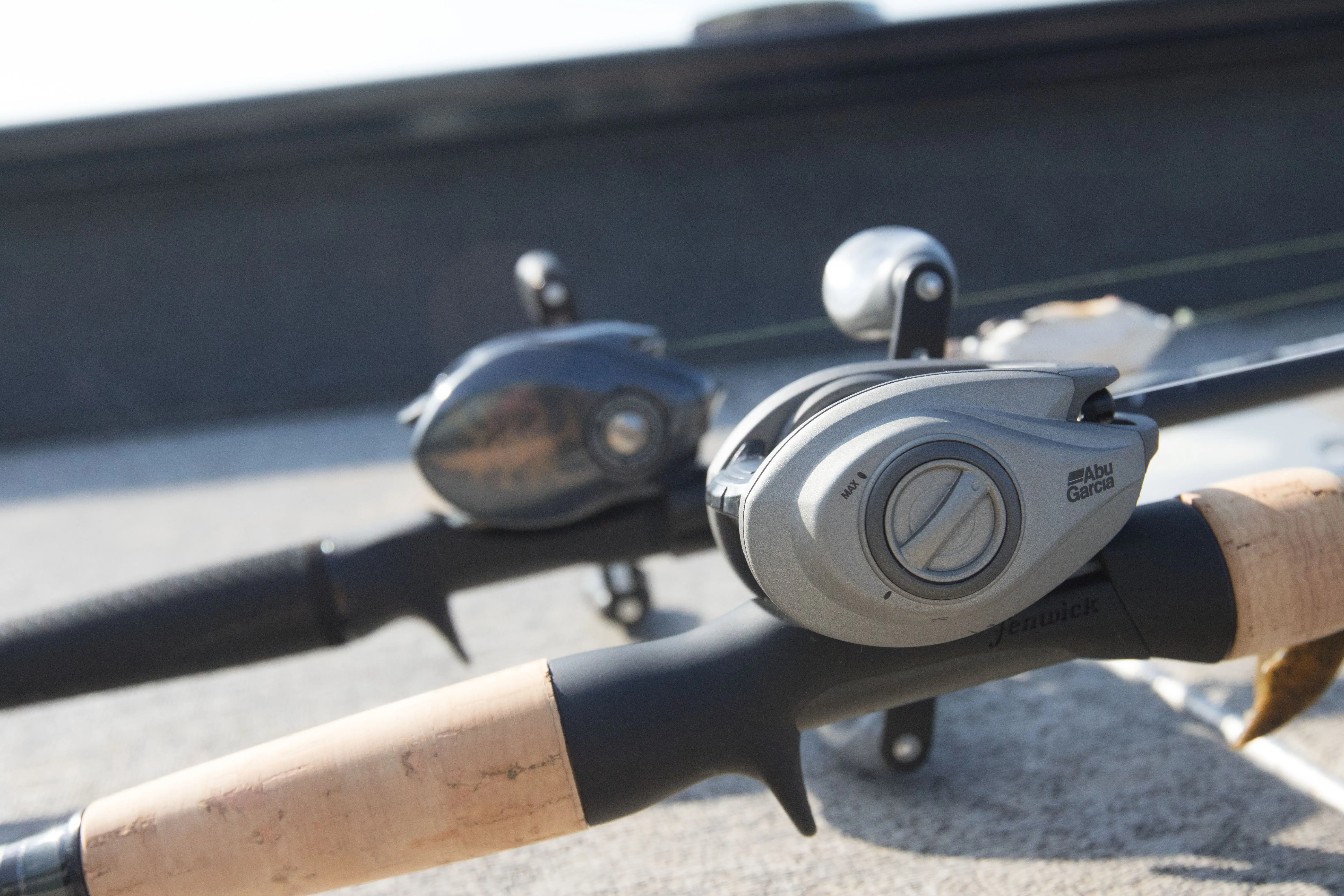



Testing an individual reel in a silo doesn’t tell you much about it. You’ll find yourself thinking, “This reel is smooth,” or, “It has a good drag.” So good and smooth. Sure, it’s descriptive, but how smooth and how good is it compared to another reel?
However, picking up different reels side by side will highlight major differences that you may overlook if they are not used in quick succession. When testing reels, I had all of them spooled up and strung on rods on every one of my outings. This allowed me to make a cast and retrieve with one, and then pick up the competition and do the same.
I successfully dissected the nuances between each reel and identified which ones stood out.
It wasn’t just me testing these reels. I also put the reels in the hands of guided clients and beginner anglers. Believe it or not, insight from newcomers is great. They aren’t burdened by brand biases and excess technical knowledge that can make you think one reel is better than another based on fancy technologies.
Beginners provided clear insights on what was working best for someone who may struggle with line management and casting.
Price was also taken into consideration in my rankings. It’s very easy to overspend on bass reels, and the award winners needed to offer performance that justified the price. Certainly, an $800 Stella is likely to perform better than some of the reels in my test. But it would be a stretch to say that it’s $600 better.
Buyer’s Guide: How to Choose the Best Bass Fishing Reel
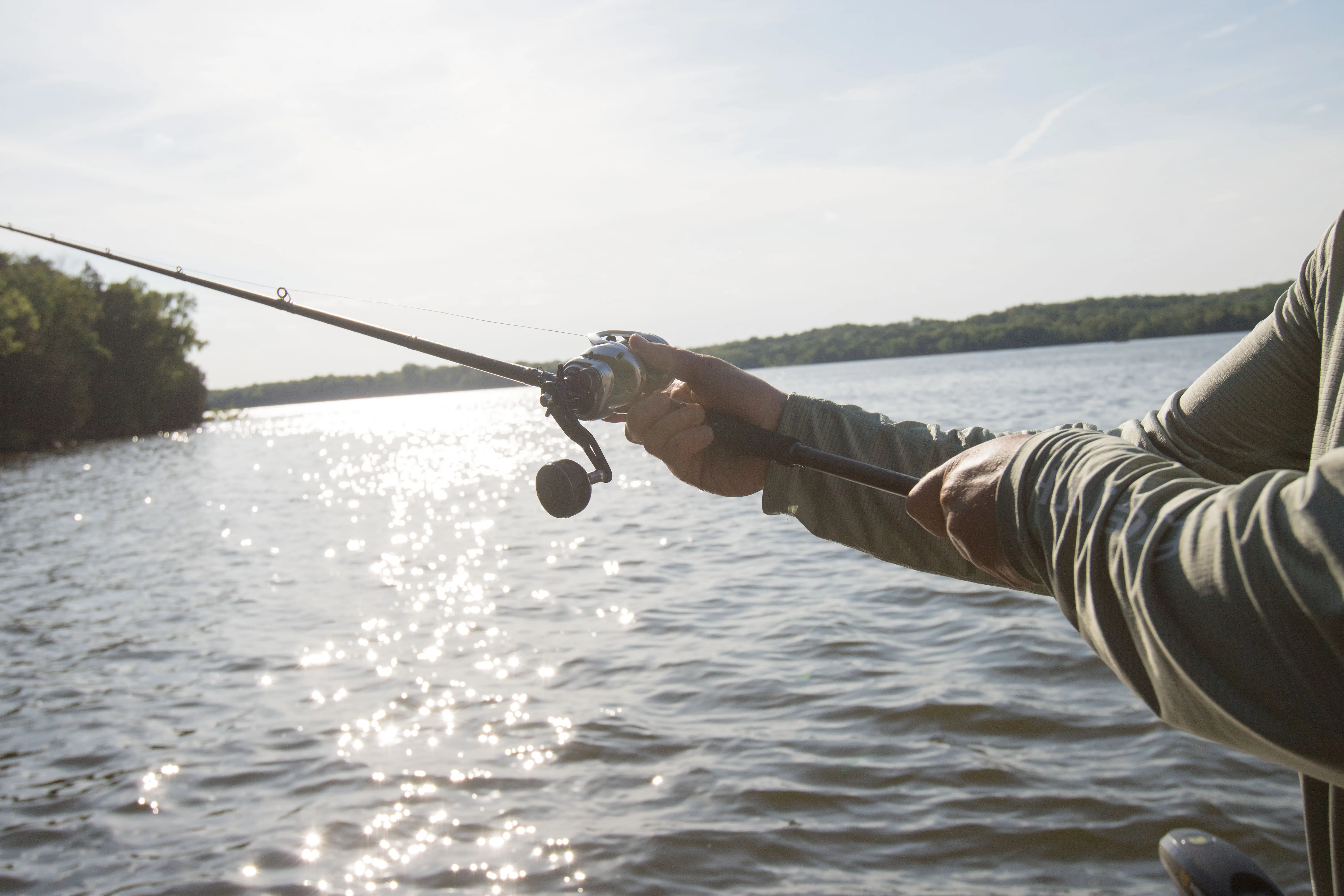



Even the best fishermen on the lake struggle with buying a bass reel. With numerous brands and models within each brand, it’s easy to feel overwhelmed. And, there’s nothing worse than heading to the water with a reel only to discover it’s a clunker.
The Buyer’s Guide is here to review some of the key factors to consider when purchasing a reel. Some of these things are very basic, but need to be covered for those just getting into the sport. Others are helpful for everyone, including the guy who fishes in tournaments every weekend.
Baitcasting vs. Spinning
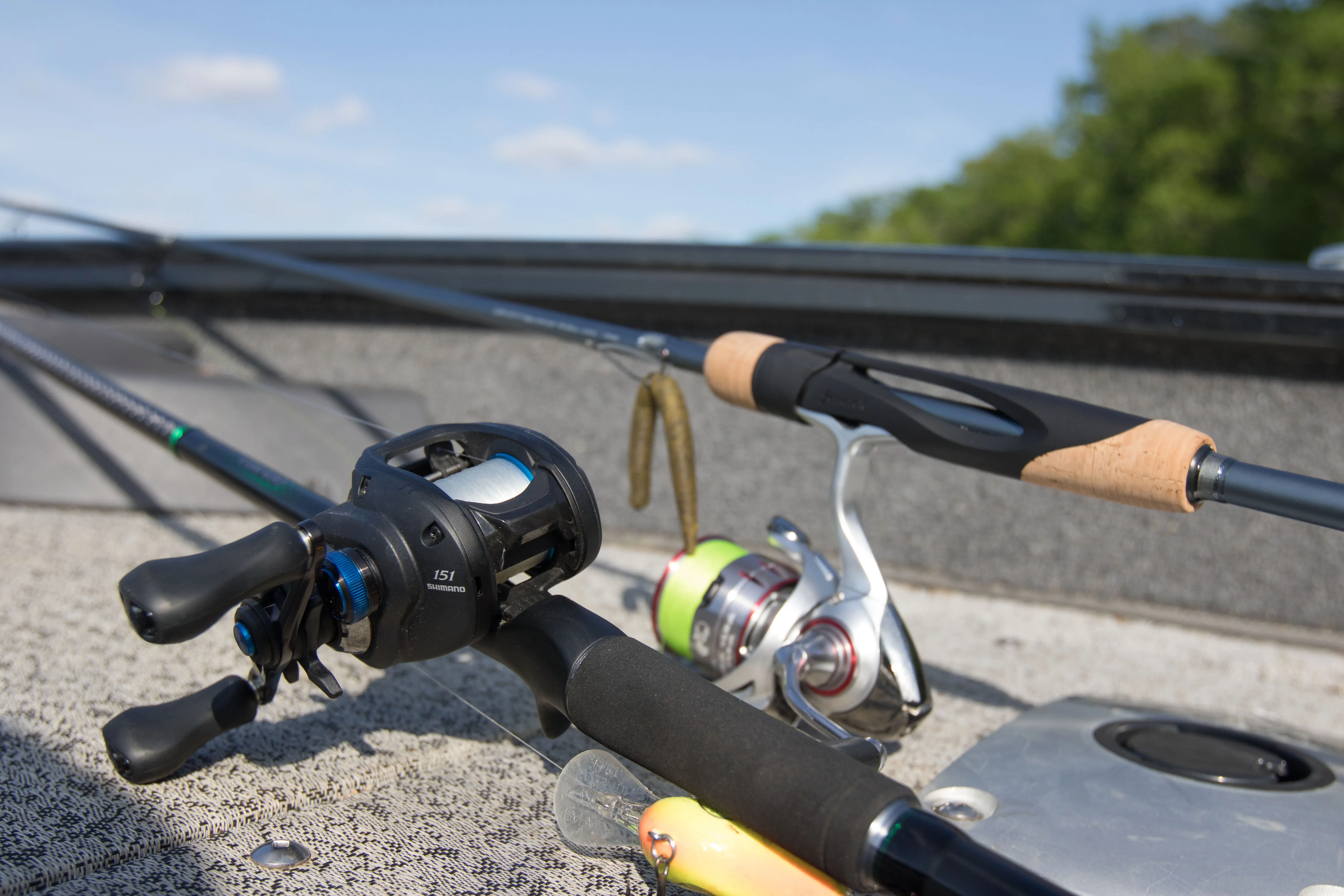



This is inherently tied to the type of rod you will be using. If you’re looking to buy your first bass fishing outfit, check out our Best Bass Fishing Rods of 2025 buyer’s guide. These two types of reels operate in entirely different ways and go on different types of rods.
Spinning Reels
Spinning reels are the most popular reels in all of fishing and will be most familiar to those new to the sport. They sit below the rod handle. To operate a spinning reel, you flip a bail, hold the line against the rod, and release it as you go forward on the cast. When you’re lure lands in the water, you flip the bail again and are ready to reel.
Spinning reels like the Abu Garcia Max SX are more manageable for beginners because the spool stays in a fixed position during the cast. With the bail flipped, the line can freely unwind from the spool in a circular motion, but the spool remains stationary.
Baitcasters
A baitcaster sits on top of the rod. There is a thumb button that you click to make a cast. However, when you click the thumb button, you have to use your thumb to hold the spool in place. That’s because with a baitcaster, the spool itself rotates to feed line into the cast as the weight of the lure pulls on it. So, you hold the spool with your thumb, and then release your thumb on the forward stroke.
The real kicker is controlling the spool when the bait hits the water. When a bait lands in the water, it slows down and almost stops on initial impact. But remember seventh-grade science class? Some dude said that an object in motion will remain in motion unless acted upon by an external force. Sure, the bait stopped, but that spinning spool? Yeah, it’s still spinning.
If an external force, i.e., your thumb, doesn’t stop that spool, it will keep spinning wildly. The result is a massive tangle in the reel, called a backlash. Backlash happens because the bait is no longer moving fast enough in a forward direction to keep up with the amount of line the reel is feeding. To avoid backlashes, you must put your thumb on the spool to stop the spinning the moment the bait stops moving at the end of your cast.
Which Type of Bass Fishing Reel Is Best for Me?
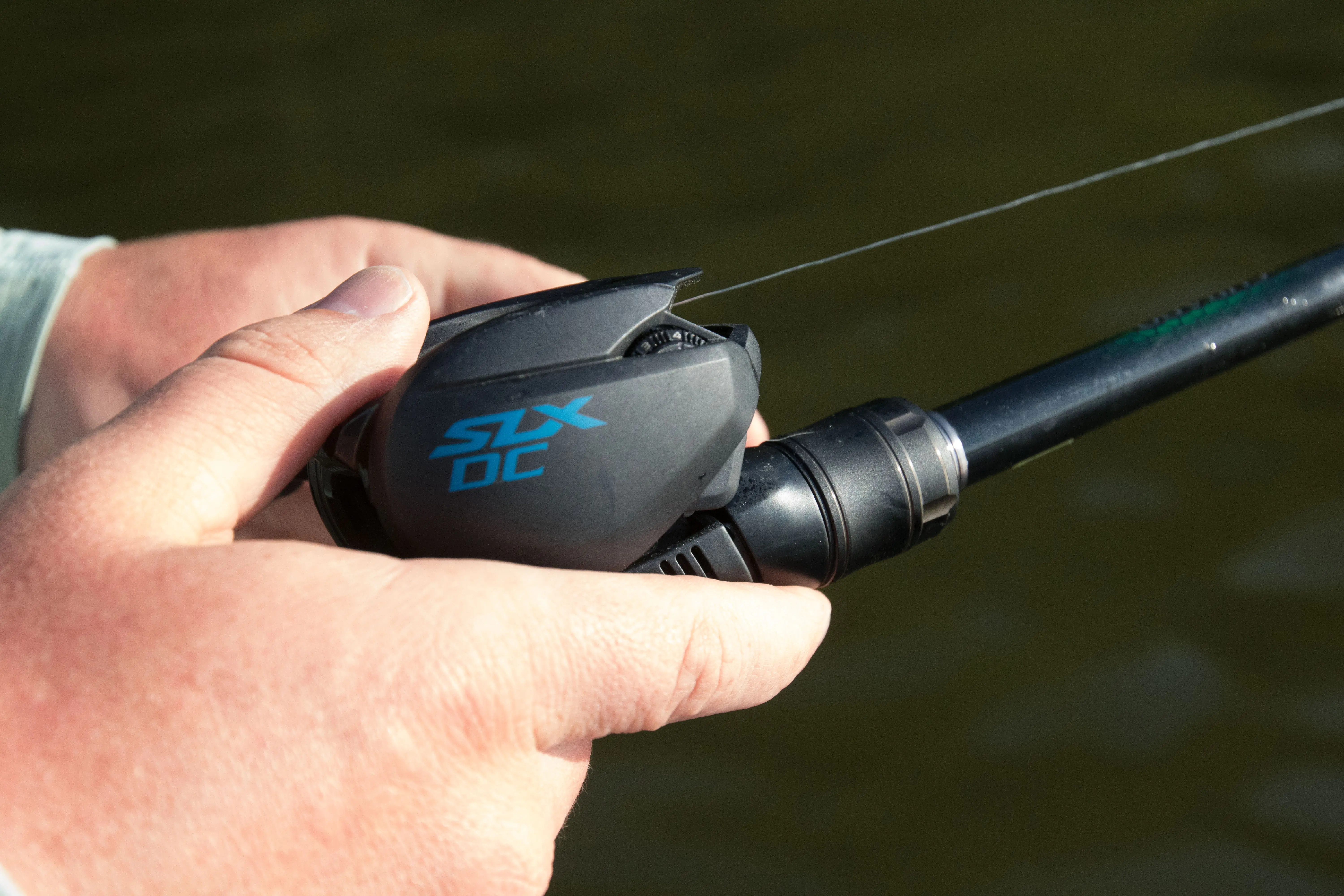



Most bass anglers use both spinning reels and baitcasting reels. However, if you’re trying to decide between them, consider the following pros and cons.
Spinning reels are easier to use for beginners. Spinning reels also excel at throwing lightweight lures. Bass anglers use them for finesse, small bait presentations. A spinning reel is also more sensitive.
Baitcasters give better control and accuracy because you can thumb the spool to affect how far your cast goes. A baitcasting reel is also better for heavier lures and, as such, is used for power fishing techniques. These reels will have heavier drags, which is better for pulling bass out of heavy cover with heavy line. Lastly, baitcasters will come with a wider variety of gear ratios, allowing you to alter how fast your bait moves with the reel itself.
Pro tip: If you’re learning how to use a baitcaster, begin by practicing in your backyard. Pull off 40 feet of line before making a cast, and put a piece of tape over the remaining line on your spool. That way, if you backlash, you won’t blow up the entire reel.
A DC, or digitally controlled reel like the Shimano SLX DC, will also help avoid backlashes. These reels feature a digital system designed to control the spool. They can still backlash, but when dialed in correctly, you can cast them without thumbing the spool at all at the end of the cast.
Gear Ratio
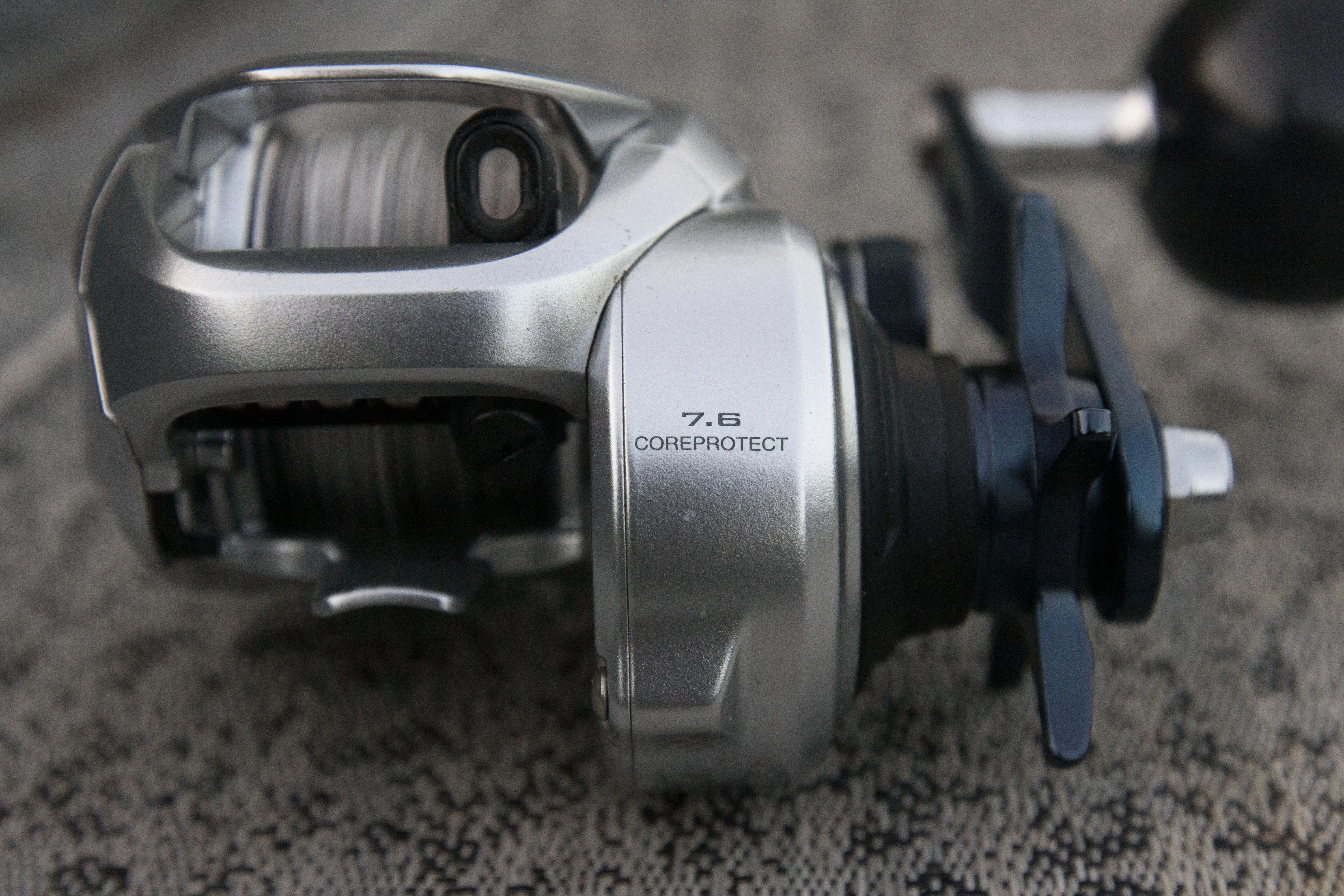



Gear ratio refers to the number of times the spool or bail spins per turn of the reel handle. So, a 6.3:1 gear ratio reel turns 6.3 times for every revolution of the reel handle.
Faster gear ratios like the 8.3:1 found on the Johnny Morris Platinum Signature baitcast reel are great when you need to move a lure quickly, or are flipping and pitching. If you’re presenting bait to precise targets and then pulling it out for the next cast, a fast gear ratio can save time. Saved time means more casts.
The downside to fast gear ratio reels is that they lose torque. A fast gear ratio will require more pressure to turn the reel handle when the reel is under load. As a result, slower gear ratios are more suitable for fishing crankbaits, as they apply constant pressure to the reel.
Spinning reels have fewer gear ratio options. Most come in a 6.2:1 ratio or less. Baitcasters, on the other hand, come in a wide variety of gear ratios.
Inches Per Turn (IPT)
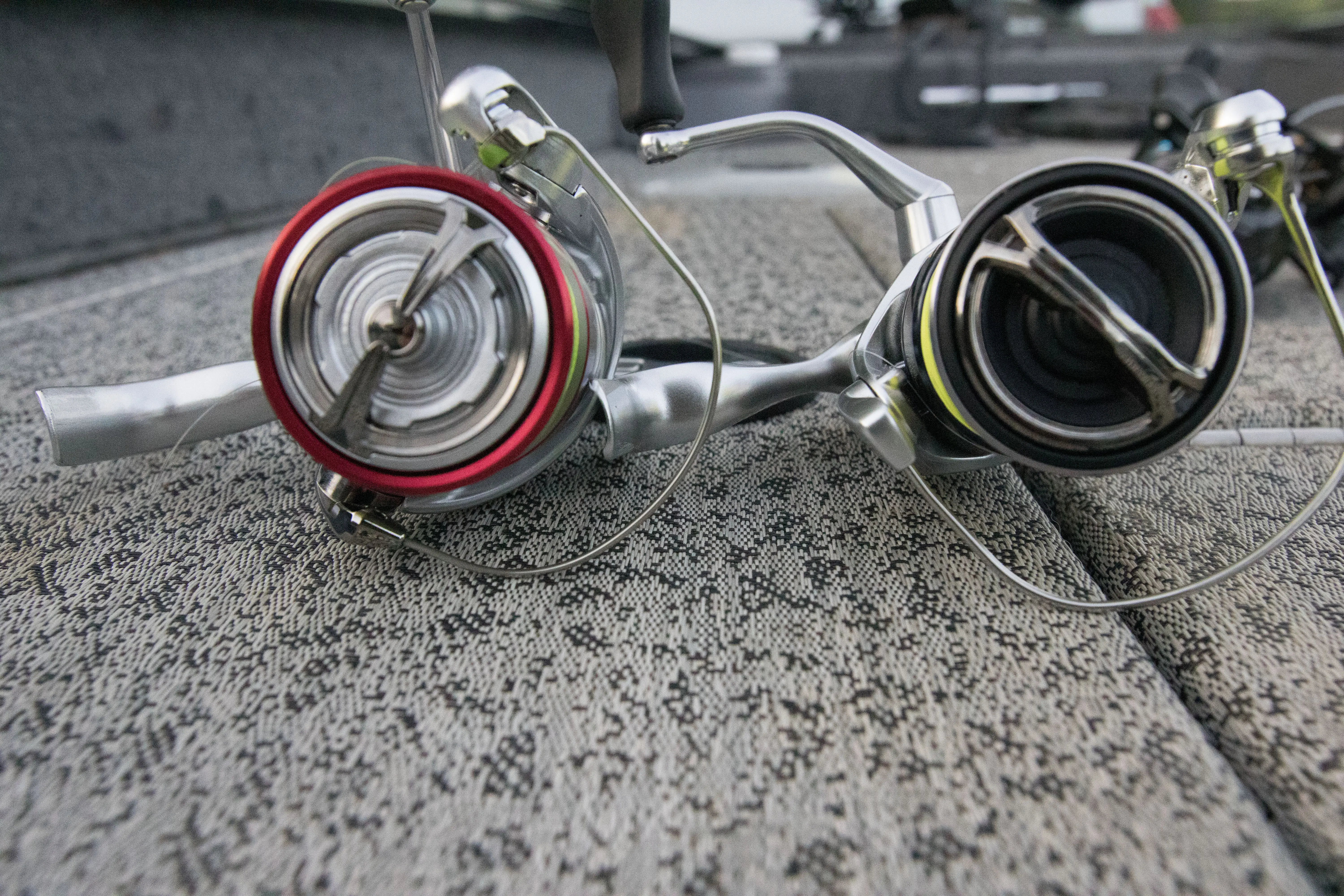



This is often overlooked by anglers, which is ridiculous. Everyone talks about gear ratio, but no one talks about inches per turn. Inches per turn refers to the number of inches of line that a reel picks up per turn of the reel handle. It is another way to affect the speed of retrieval.
A reel with a high IPT will have a larger spool, resulting in more line being picked up. So, a reel with a lower gear ratio could move a bait faster than a higher gear ratio reel because it picks up more line per turn of the handle.
Line Capacity
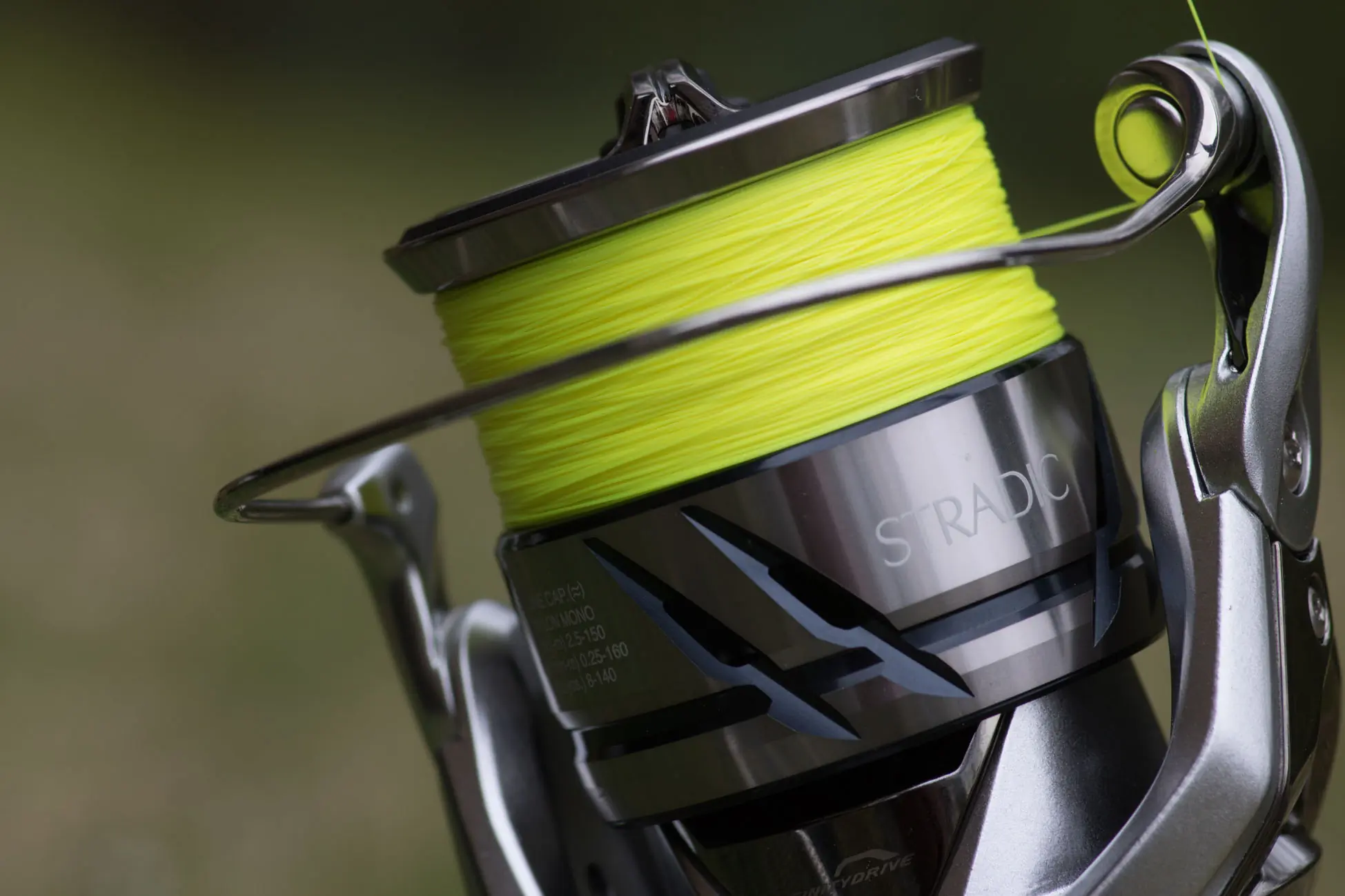



Line capacity refers to the amount of line that the spool is capable of holding. Manufacturers will provide you with different specifications for both braided line and monofilament line.
Unfortunately, this isn’t as clear-cut as it may seem. Different lines have different diameters and occupy different amounts of space. Some braids, for example, have half the diameter of another brand in the same pound test rating. Which diameter did a manufacturer use when coming up with their specs? No one knows. You don’t know if you’re comparing apples to apples between brands.
However, you can use it as a rough guideline. And, for most bass fishing, every reel is going to hold plenty of line. The only time I pay attention to it is if I plan on spooling a reel with heavy line that takes up a lot of room. In those cases, the Shimano Tranx offers a huge amount of line capacity.
Bearings
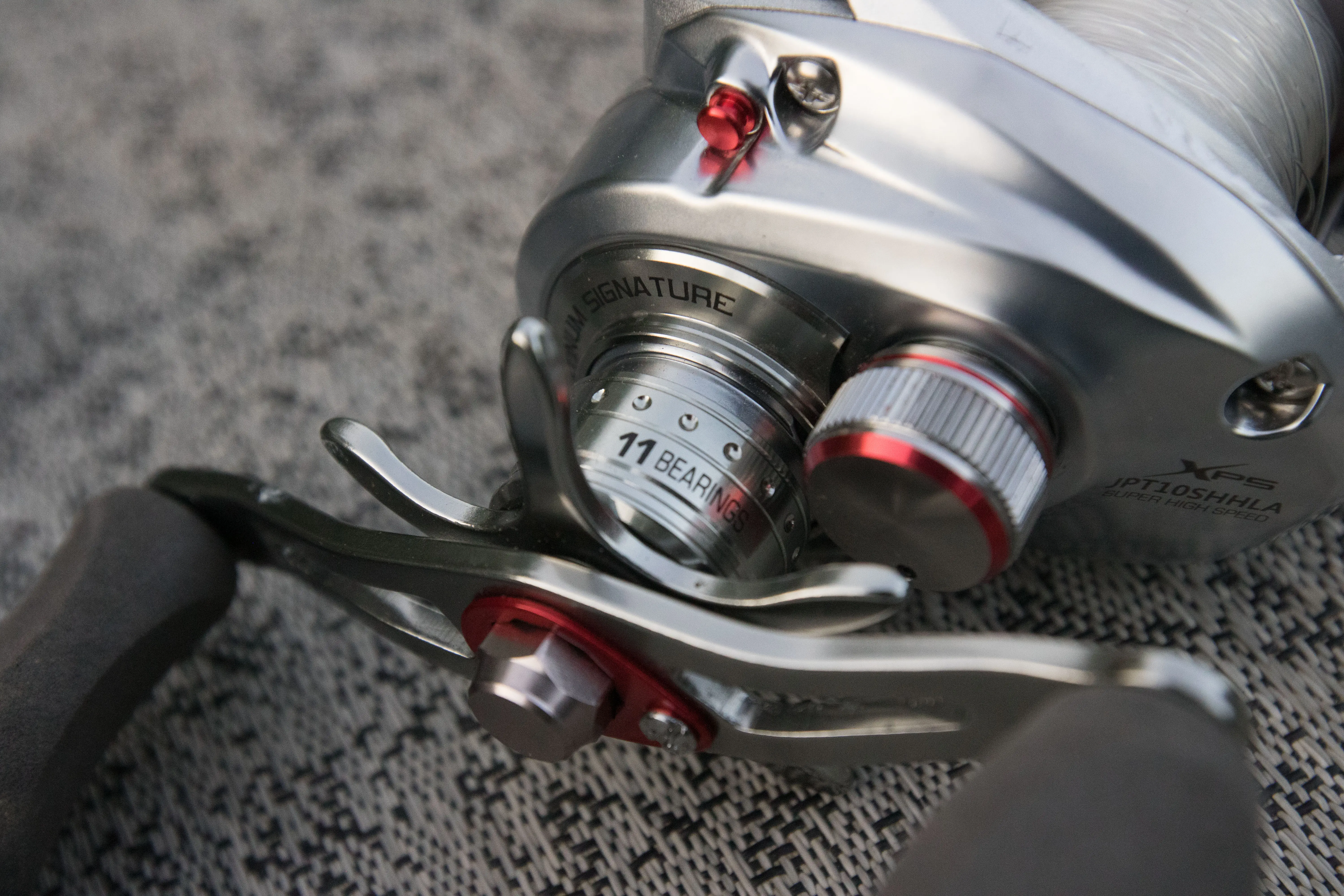



Bearings are used in reels to make them operate more smoothly. They are placed between moving parts to reduce friction and wear. As a general rule, the higher the bearing count, the smoother the reel will be.
That isn’t always true, though. Fewer quality bearings can result in smoother operation than a reel with more, lower-quality bearings. The Shimano Stradic FM features only 6+1 bearings, which is significantly fewer than other spinning reels on the market. However, Shimano is a top dog in the reel market for a reason. They only use the best components, and their reels are silky smooth despite lower bearing counts.
Most reels will distinguish different types of bearings with the +1 distinction. Without going too far into the weeds, the +1 refers to a roller bearing. These bearings are technically bearings, but don’t affect smoothness as much as a ball bearing.
Reel Size
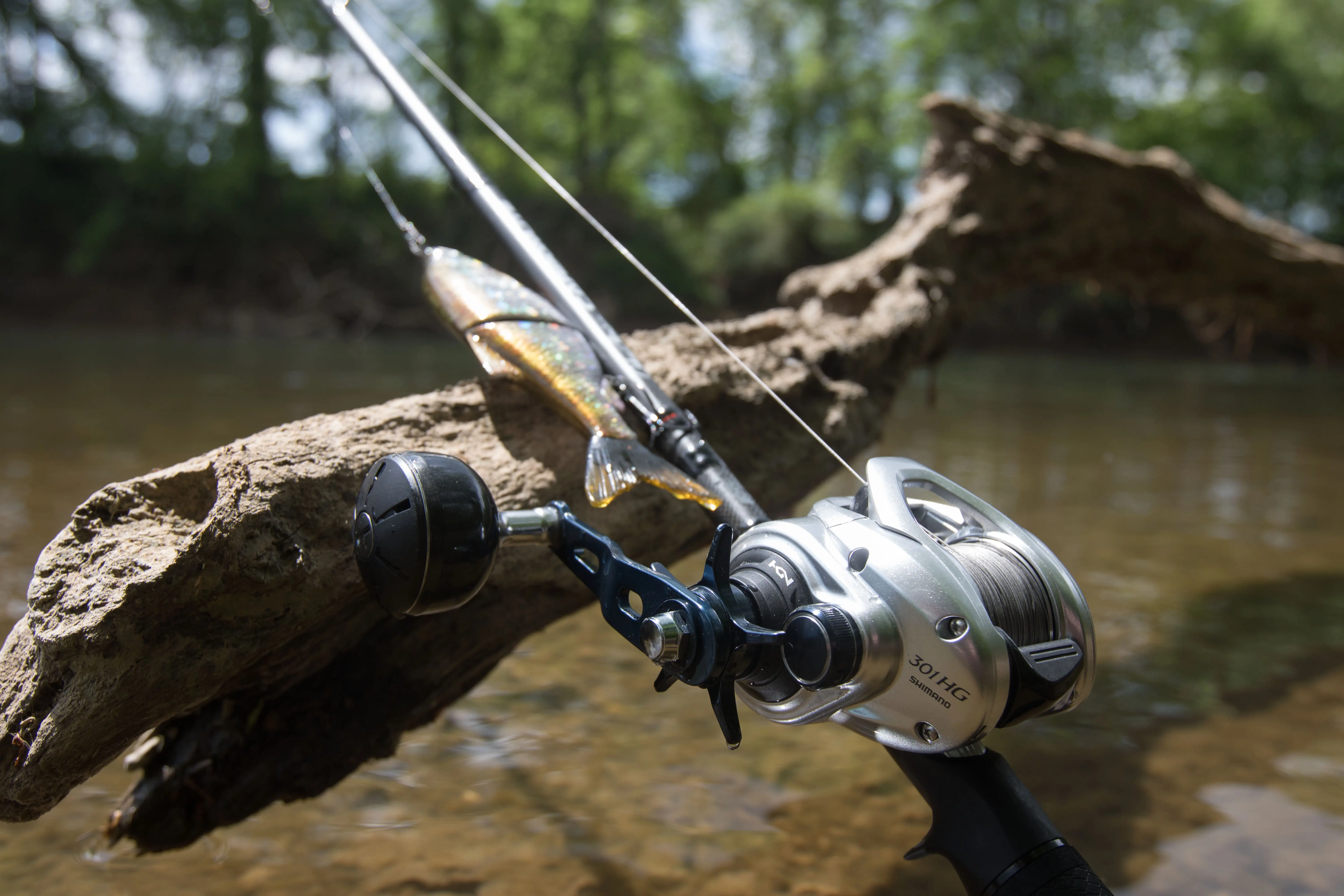



Reels come in a variety of sizes, and it can be tough for newcomers to know which one to get. For spinning reels, a 2500-3000 size reel will be perfect.
For baitcasters, bass anglers use 150-300 size reels. All are passable, with 150 and 200 being the most common. Reels like the Abu Garcia Max Z low-profile baitcaster fit in that range and offer a compact package that is easy to palm all day. Larger 300 reels are great for large swimbaits where extra line capacity is needed.
Frame Pieces and Materials
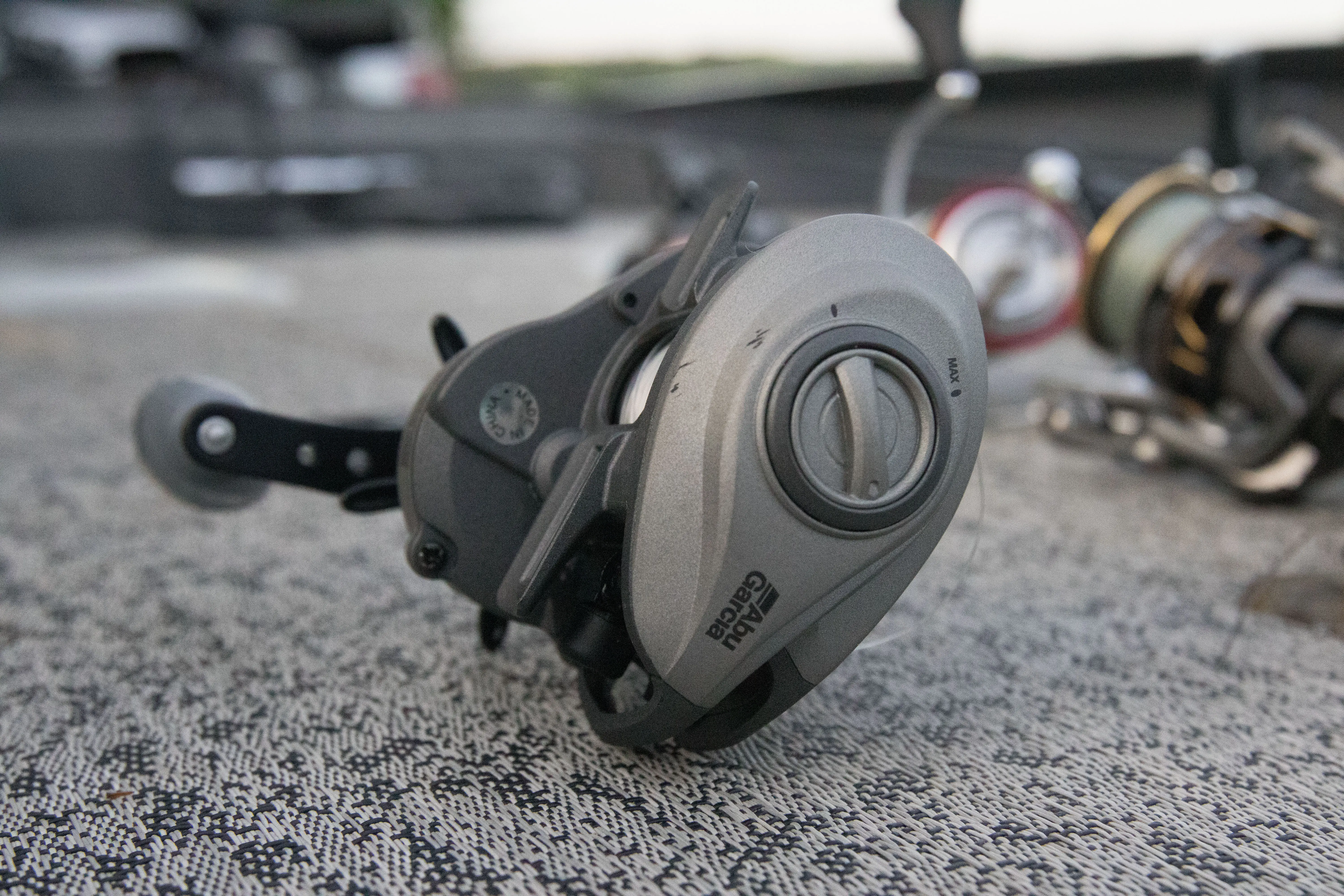



Reel bodies are manufactured as either one solid piece, or multiple pieces that are held together. One-piece reels have better durability and will perform better when under stress as there aren’t multiple pieces that can torque differently. But, they cost more.
The most common materials used to manufacture reels are graphite and aluminum. Graphite tends to be lighter, but it will also be less durable. Aluminum, especially the high-quality aluminum found on reels like the Daiwa Tatula CT, provides minimal weight and unmatched durability.
Ease of Use and Adjustability
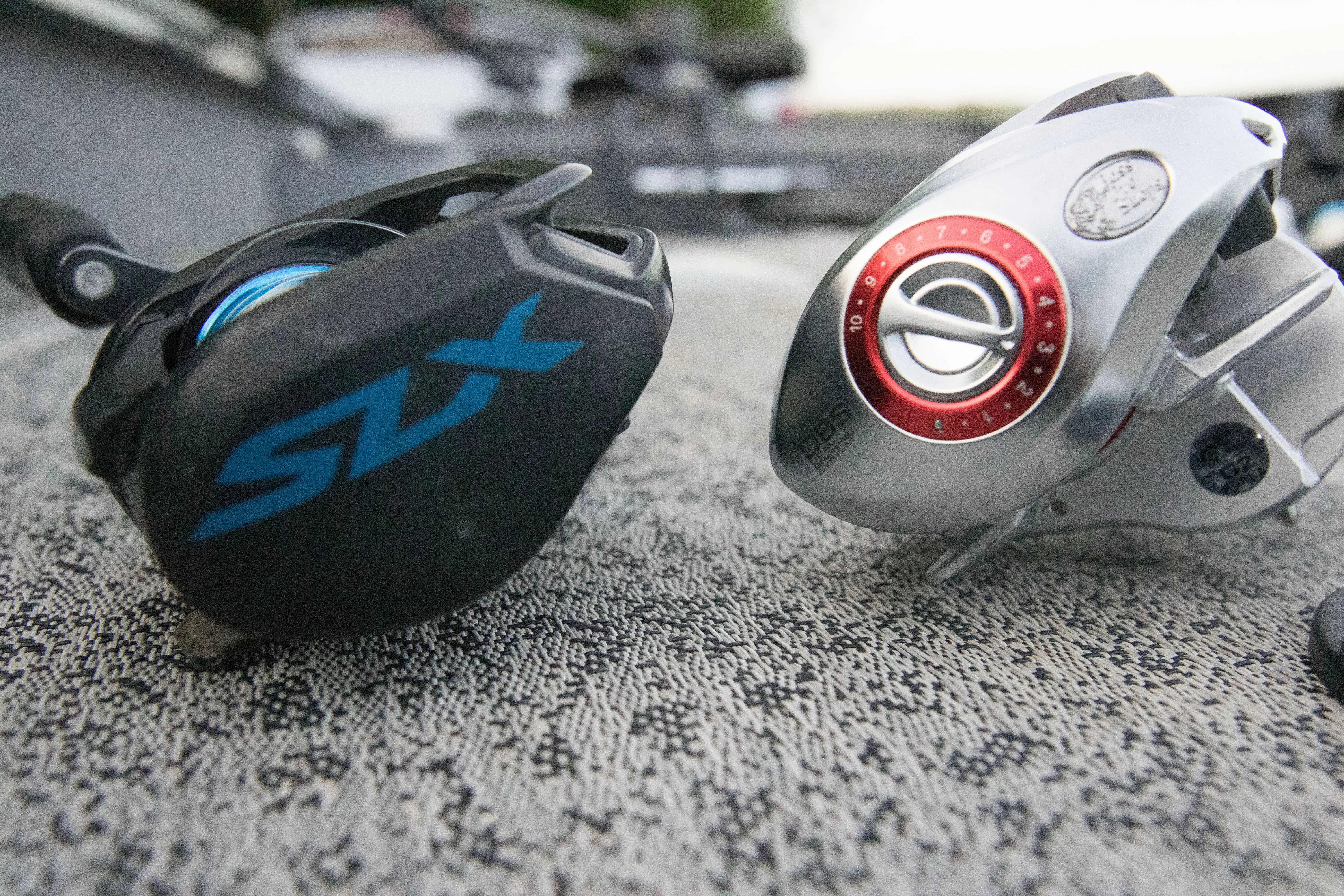



Ease of use isn’t a spec that a manufacturer will publish. However, looking at the reel can give you a general idea of it. This is most important with baitcasters.
Baitcasters have three levels of adjustability: brake system adjustments, tension knob adjustments, and drag adjustment. Both the drag adjustment and tension adjustments are fairly standard across all reels and are easily accessible. However, adjusting the brake system on some reels can be difficult.
The best baitcasters, like the Diawa Tatula CT provide a knob on the exterior of the reel to adjust the brake system. Others, like the standard Shimano SLX (NOT the DC) require you to remove a plate to access the brake system.
The best spinning reels and baitcasters should have a wide range of adjustability so that you can dial the reel in perfectly for your use.
Startup Inertia
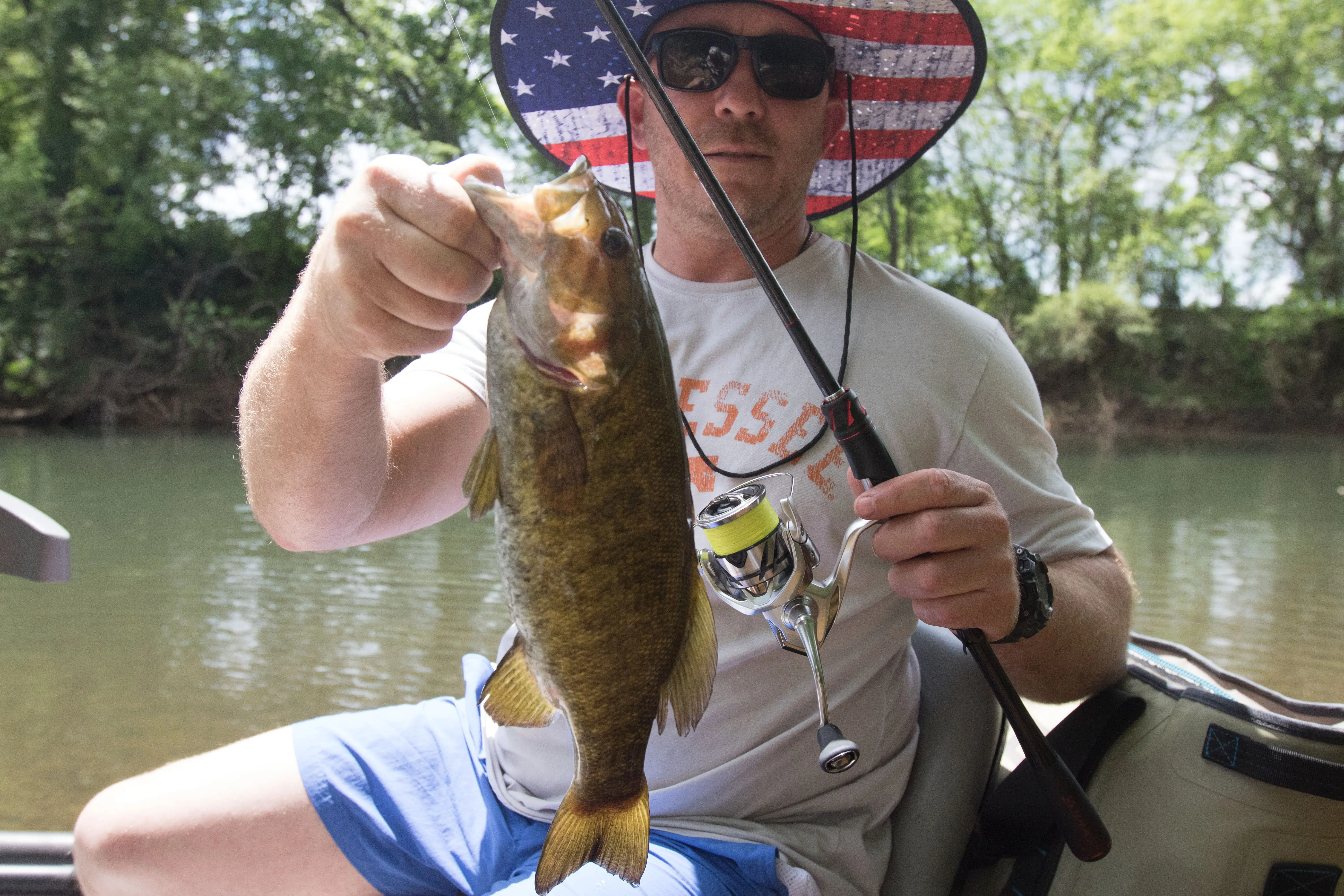



And we’re back on Sir Isaac Newton and nerdy physics. Bass won’t take blistering runs that can burn up a drag, and just about every reel on the market has enough drag to stop any bass that swims. However, bass will take sudden runs. While you can apply a slow, steady pressure to lightweight line without it snapping, applying quick, rapid pressure will cause it to break.
The startup inertia in a reel refers to how easily the reel’s drag system engages when a fish initially takes off. The best drags will immediately engage when pressure is applied.
Reels with poor startup inertia are very noticeable. When a fish runs, the drag will feel jerky and sudden. You’ll feel pressure building and building until the drag engages. You definitely don’t want that when you’re trying to land a giant. In our test, the Shimano Stradic FM had the lightest startup inertia of any reel we tested.
Price and Value of the Best Bass Fishing Reels
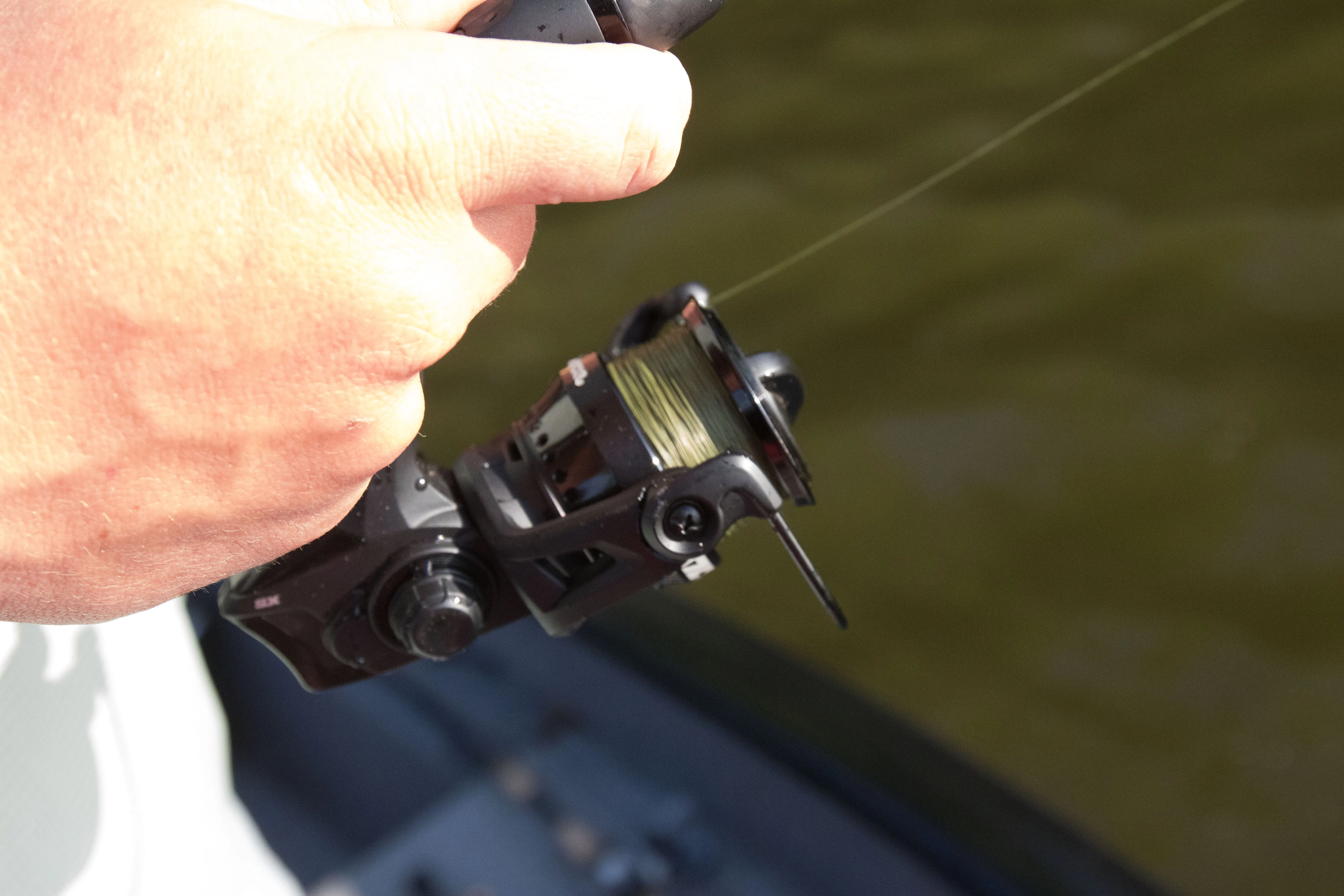



You can pick up a cheap reel from Walmart and fish for bass until the cows come home. There certainly is nothing wrong with that, and it takes me back to the roots of fishing. Simple, cheap fun.
Or, you can take it to the other end of the spectrum and make putting a hook in a green slimy thing your entire life’s mission. Either way, there’s a reel out there for you.
Budget Bass Fishing Reels
At a bare minimum, a passable bass reel costs $30-70. If you dip below 30 bucks, you’ll regret it. Reels cheaper than that will be so jerky and poorly designed that you’ll be fighting it all day. I’ve tested some that were pretty much broken right out of the box.
Some of the best, like the Abu Garcia Max SX 3000, are great reels for the price and provide anglers with everything they need to get out on the water. An ideal reel in this range will be somewhat durable and reliable, performing the job day in and day out. This is the most volatile price range, as some options are complete junk, but my favorites are a surefire bet.
With budget reels, you may be losing out on low startup inertias. They also won’t have as many bearings and will be less smooth, which reduces sensitivity.
Adjustability can be lacking with a smaller range of drag or tension adjustment. Almost all reels in this price range will be made of carbon, or cheap aluminum, which is prone to scuffs and breakage. You may find plastic components as well, but it’ll get you fishing.
Mid-Tier Bass Fishing Reels
Most bass anglers (including me!) end up purchasing mid-tier bass fishing reels. Reels in the $100-300 price range play a perfect balance between performance and budget, especially considering how many rod and reel setups serious bass anglers own.
Reels in this price range should be expected to have no noticeable flaws. They need to have plenty of bearings and operate smoothly. Startup inertia shouldn’t be an issue, and they should have easy adjustability. Most will have numerous gear ratios and sizes so that you can perfect the reel for your needs.
These are the reels you will come to rely on day in and day out. They will also be constructed with quality materials that stand up to the test of time. You won’t find carbon reels here; only aluminum frames that can withstand a beating. Some of my favorites, like the Bass Pro Johnny Morris Platinum Signature Spinning Reel, not only claim to perform better than high-end reels, but actually do while on the water.
But, they still won’t be the greatest thing out there.
Premium Bass Fishing Reels
Remember when I said that some reels are the equivalent of men’s high-end jewelry? Yeah, this is where they fall.
Bass reels in the $500+ price are honestly works of art. Ideal specs and performance are a given, and you enter into the world of making something that is unnecessarily perfect. You may have noticed a difference in price from the top end of mid-tier reels to the bottom end of premium reels. That’s because reels in between don’t make much sense to me. They flirt with being the most premium, but don’t quite make it. You’re either a baller or you aren’t, both of which are fine.
These reels will be very light. In fact, the lightest money can get. They only have the finest Japanese components. And yes, the Japanese are better at making reels than Americans are. I love Toyota trucks for a reason. Reels are the same.
At this price, you’ll find a reel with a drag system so perfect that it’s sure to melt your heart. And it will pair so perfectly with a rod that you won’t even notice its there.
Reels that are in the premium range are unnecessary from a functional standpoint. I typically recommend this price range for saltwater anglers who can truly benefit from the advantages of higher-quality metals that are corrosion-resistant and drags that can stop a truck.
However, I’m a fishing nerd and understand the obsession with the best of the best. If you have the extra money lying around, reels in this range will give you some serious street cred. Due to price, though, I include any premium reels in this test.
Frequently Asked Questions
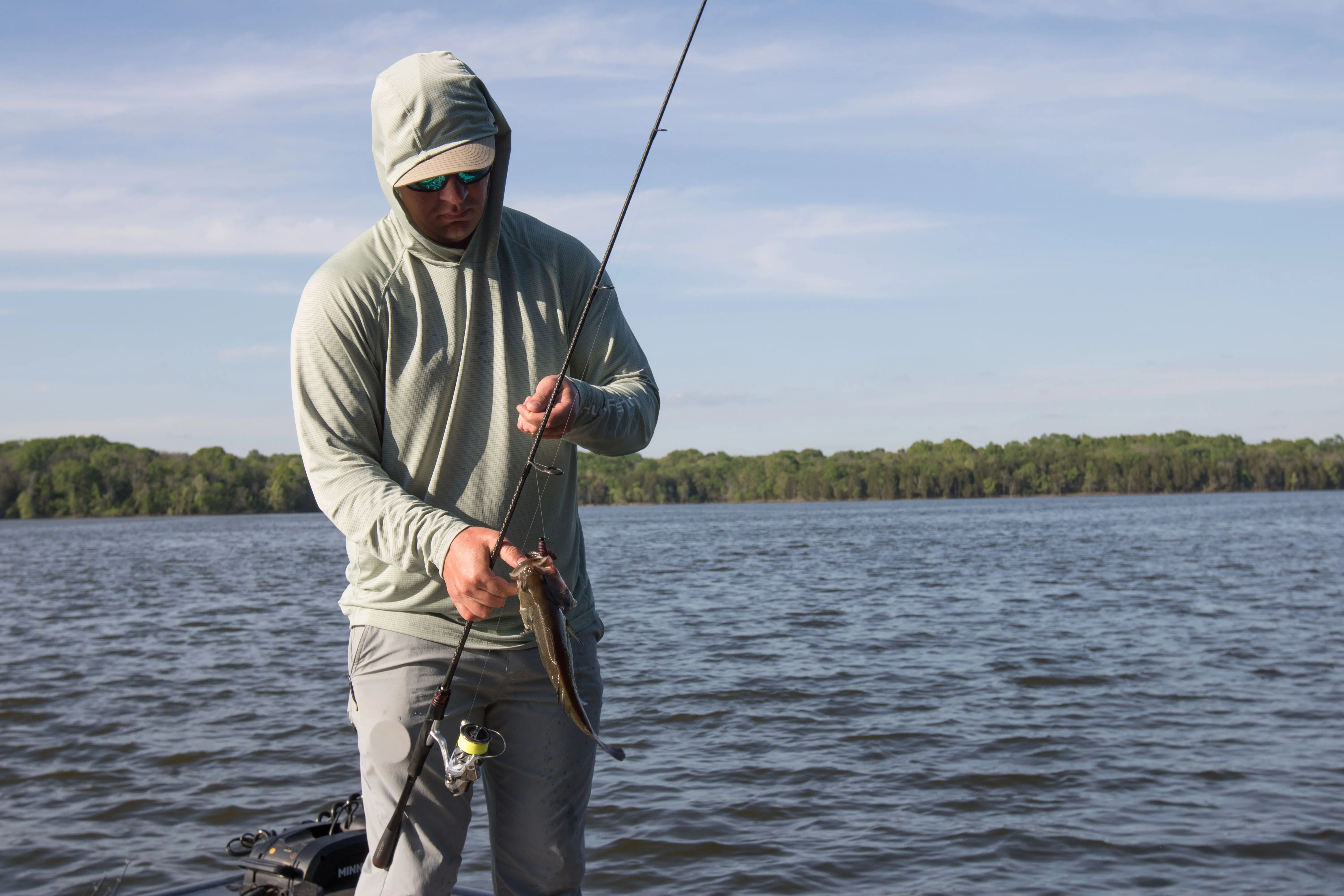



For spinning reels, most anglers use a 2500-3000 size bass reel. These provide a great balance on the rod, plenty of power to fight bass and are capable of holding enough line for the longest casts. For baitcasters, most anglers use 150-200 size reels, but dedicated glidebait anglers go up to 300 size reels.
Both are used for bass fishing, and neither is better. They do different things. Baitcasters give better accuracy and control. They also cast heavier lures better. Spinning reels excel at throwing lightweight lures and are easier for beginners to operate. Most experienced bass anglers use spinning reels for finesse techniques and baitcasters for power fishing.
Spinning reels are most commonly found with a 6.2:1 gear ratio or lower. For baitcasters, a reel with a gear ratio at around 6.1:1 is great for slowly moving baits as well as crankbaits that require better torque in a reel. Gear ratios of 7.6:1 and above are ideal for situations where quick line retrieval is necessary, such as flipping and pitching.
Shimano and Daiwa are the most popular reel manufacturers. Both are Japanese companies that have been making reels for decades. However, many others are great as well. Abu Garcia, Lews, 13 Fishing, and others all make quality products
